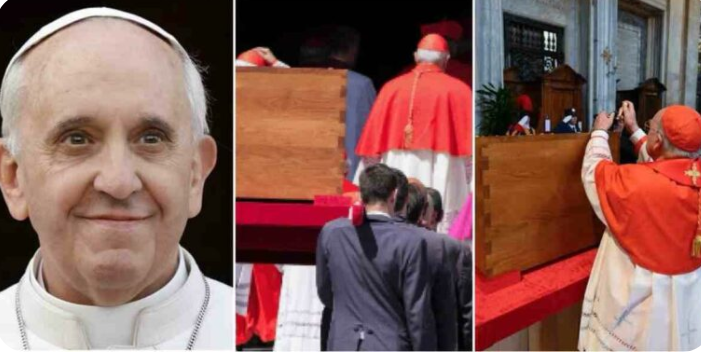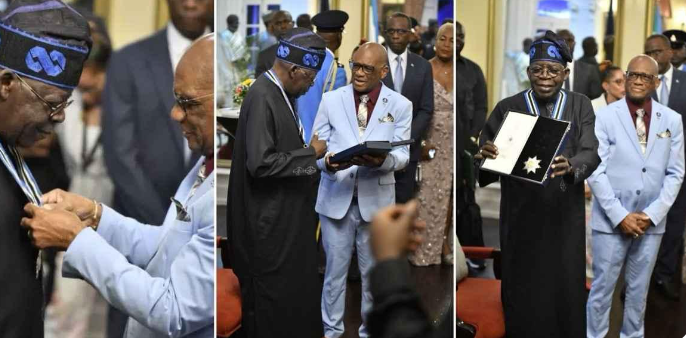
A Final Journey of Humility: Pope Francis Laid to Rest at Santa Maria Maggiore

History unfolded in Rome as Pope Francis, one of the most beloved pontiffs of modern times, was finally laid to rest inside the historic Santa Maria Maggiore Basilica on Saturday, marking an emotional and poignant close to a remarkable era. The Vatican confirmed that the burial followed a solemn funeral mass at St Peter’s Square, where hundreds of thousands gathered to pay their last respects to the pope who had captivated the world with his humility, compassion, and unwavering devotion to the faith.
At precisely 1:00 pm local time (1100 GMT), the funeral rites commenced with a 30-minute ceremony that resonated with the spirit of simplicity Pope Francis had always championed throughout his lifetime. Footage released by the Holy See showed a powerful moment as cardinals sealed the pope’s simple wooden and zinc coffin with red wax, a traditional rite deeply rooted in centuries of Catholic custom. Cardinal Kevin Farrell, acting as the camerlengo responsible for overseeing the daily affairs of the Vatican following the pope’s passing, was seen sprinkling holy water on the casket before it was gently lowered into its final resting place.
True to his wishes, Pope Francis rejected the grandeur that often accompanied papal funerals. His grave, crafted from marble sourced from Liguria — a region that traces back to his Italian roots — bore only a simple Latin inscription: "Franciscus." There were no elaborate decorations, no towering monuments, only a silent testament to a man who, even in death, remained committed to humility. It was a final act of devotion from a pope who had spent his life seeking to strip away the excesses of privilege in favor of service, mercy, and love.
The location of his burial holds profound significance. Francis, born Jorge Mario Bergoglio in Buenos Aires, Argentina, chose the side nave of Santa Maria Maggiore Basilica for his tomb as early as 2023, a place where he had often prayed privately before embarking on and returning from his numerous international missions. His deep personal devotion to the Virgin Mary made the basilica a spiritual home for him within Rome. Throughout his papacy, he frequently visited the sacred icon of "Salus Populi Romani," an ancient image of the Virgin Mary and the infant Jesus housed within the basilica, seeking guidance and offering gratitude.
Saturday's events brought a symbolic return to tradition as Santa Maria Maggiore, one of the four major papal basilicas in Rome, hosted its first papal burial since Pope Clement IX in 1669. The basilica, which has stood for over 1,500 years since being commissioned by Pope Sixtus III around 432 AD, carries within its walls relics and treasures of immense spiritual and historical value, including the famed relics of the Holy Crib, believed to be remnants of the manger where Jesus was laid after his birth. Now, it also cradles the mortal remains of a pope who had rekindled the Church's commitment to humility, social justice, and outreach to the marginalized.
The streets of Rome were flooded with mourners. From devout Catholics to curious onlookers, the atmosphere was filled with a deep sense of sorrow and admiration. As the procession moved from Vatican City through the ancient streets to Santa Maria Maggiore, an ocean of faces watched in silence and prayer. Many clutched rosaries, others held candles or photographs of the late pope. Some simply stood with hands over their hearts, whispering quiet prayers into the spring air. Vatican News captured and broadcast the emotional journey, and social media platforms were soon awash with messages of condolence and gratitude from all corners of the globe.
Pope Francis leaves behind a legacy that redefined the papacy for a new era. Elected in 2013 as the first pope from the Americas and the first Jesuit to ascend to the throne of Saint Peter, he chose the name Francis after Saint Francis of Assisi, a figure known for his life of poverty and dedication to peace. True to that inspiration, Pope Francis became a powerful voice for the voiceless, consistently urging the world’s leaders to care for the environment, the poor, the elderly, and refugees. His landmark encyclicals like Laudato Si’ and his efforts to modernize the Catholic Church’s approach to complex social issues won him admiration far beyond religious circles.
Throughout his papacy, he navigated both praise and criticism with grace, addressing scandals within the Church, championing interfaith dialogue, and emphasizing pastoral care over rigid doctrine. Even those who did not share his faith found in him a figure of extraordinary moral clarity, someone who dared to speak uncomfortable truths about inequality, greed, and indifference in a rapidly changing world.
As the Vatican bells tolled and the final prayers echoed through the cavernous interior of Santa Maria Maggiore, it was clear that the Church — and indeed the world — was saying farewell not just to a religious leader, but to a symbol of hope in often dark and divided times. Pilgrims and tourists alike are expected to continue visiting his resting place in the coming days, offering flowers, lighting candles, and whispering prayers of thanksgiving.
Pope Francis’ journey from the barrios of Buenos Aires to the heart of Rome was a story of resilience, faith, and deep compassion. In his final resting place beneath the ancient stones of Santa Maria Maggiore, he remains among the people, as he always desired — not elevated on a pedestal of gold, but resting humbly, quietly, eternally connected to the city and the Church he loved so dearly.
Even in death, Pope Francis reminds the world of the enduring power of simplicity, kindness, and unwavering faith. His spirit will continue to live on, not only in the marble that now bears his name but in the hearts of millions whose lives he touched with his words, his actions, and his extraordinary example.


